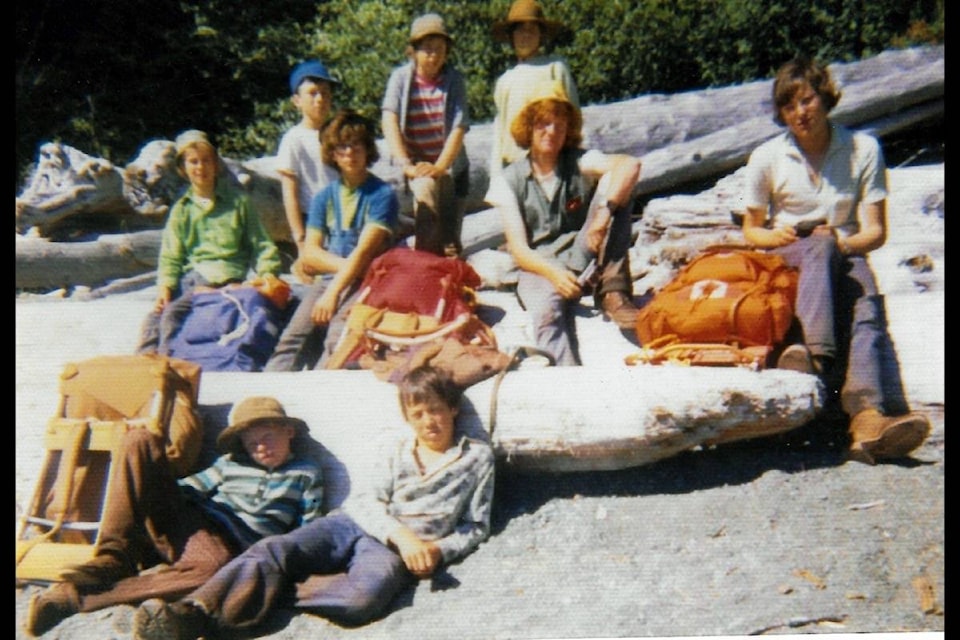Elida Peers
Contributed
Don’t they look tired?
Middle aged men today, these young fellows were on a pretty exciting adventure, taking on the challenge of the West Coast Trail when it was still a primitive route without the upgrades that came into place later.
It was 1973 and Sooke scoutmaster Ed McDonald had decided to offer the young boys of the 1st Sooke Scout Troop a memory to last a lifetime. Ed is not in the photo, he must have been the photographer.
Perched along at the back are Bill Zigay, Jim Waddell, Terry Wilson, Wayne Wilson, John Welsh, Brian Wallace, and Peter Van Iperen. The two in front are Glen McDonald and Doug Jay.
In today’s community, Bill Zigay is known, of course, as the proprietor of Sooke Power Supplies, while the two Wilson boys are living up-Island and employed in the forest industry. Doug Jay is the source for this photo.
Initially this trail was built to install and service a tree-to-tree telegraph line, beginning at Bamfield in 1889, to carry messages from the Cable Station and lighthouses on the coast, through Jordan River, Sooke, and on to Victoria.
The trail was extremely rough then, and often the line was out of service, but it was part of the “red route” international communication system that linked North America to Australia, through Suva and Fiji.
After the wreck of the iron steamship Valencia in 1906 at Pachena Point, with its terrible loss of life, the Canadian government responded to the criticism which followed by erecting more lighthouses and by setting crews to upgrade the trail. It then became known as the Dominion Lifesaving Trail.
By the time these young fellows hiked the trail, the 75-kilometre route had become a national park, and was beginning to attract the attention of serious hikers from across the continent and as far as Europe.
Hiker Brian Wallace, recently retired from the Department of National Defence, recalls the ruggedness of the trail when the scout troop, which included boys aged nine to 15, tackled the route in July 1973. He remembers that while there were no amenities like ladders or bridges in those days and the group used ropes for difficult areas, and even used a cable car, they made it in eight days. At Nitinat they were ferried across by First Nations fishers.
•••
Elida Peers is the historian of Sooke Region Museum.
